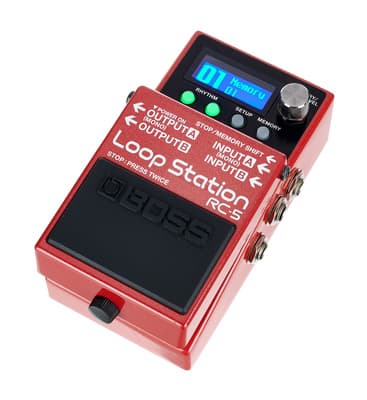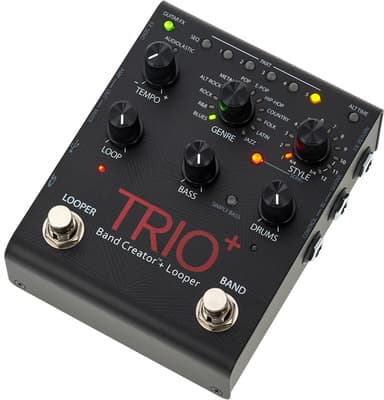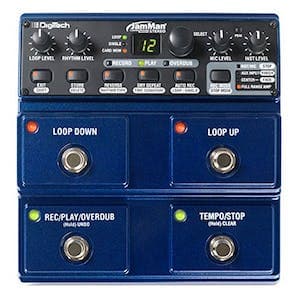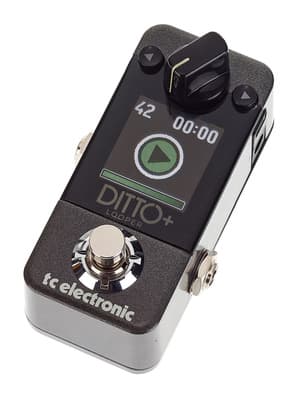Loop Stations: Comparisons, Tests & Reviews
Find the Perfect Looper - for Beginners & Pros
Loop Stations: The Ultimate Comparison for Creative Musicians
On this page you will find comprehensive information and product comparisons of the best loop stations on the market.
A loop station (also known as a looper) is a versatile device that allows you to record audio tracks and play them back in an endless loop. Whether you connect a microphone or a musical instrument, you can layer multiple tracks to create complex soundscapes. Loop stations vary greatly in terms of recording time, number of slots and connections, so here we give you a detailed overview of the most popular models - for beginners and professionals alike.
You'll also find reviews of individual units, as well as interesting articles that will give you a deeper insight into the world of loopers and help you find the perfect unit for your needs.
Our Recommendations
Models for Beginners
In the following video we show you a demo of the Boss RC-3 Loop Station, in which several electric guitar riffs are looped live. Then you will learn more about the history of looping and how modern loop stations work.

History of the Loop Technique
The development of looping technology began with the invention of the tape recorder. A loop originally referred to a piece of tape stuck together at both ends that was played in an endless loop, allowing for repetitive recording. In the 1960s, artists began experimenting to with the technique. An early example is Terry Riley's 'Time Lag Accumulator'¹, a device that used two tape recorders linked together, with the length of the loop determined by the distance between the recorders.
In the 1970s, Robert Fripp (King Crimson) and Brian Eno took this technology and developed it further under the name 'Frippertronics'². The emerging rap and hip-hop culture of the late 1970s also used loops, albeit with turntables and special operating techniques. Today, modern loop stations allow the electronic recording and playback of loops, giving musicians almost limitless creative possibilities, which will be explored in more detail below.
Our Recommendations
Models for Professionals
How a Loop Station Works
Loop stations vary in features, operation and price, but some features are common to all models. A connected instrument or microphone records an audio track that is then played back in an endless loop. This audio track can be overlaid with another - a process known as overdubbing, which allows you to combine different parts of a piece of music that cannot be played at the same time.
For example: You play a sequence of chords on your guitar that is recorded and played back as a loop. You can play a solo over it, which is also recorded and played back with the first loop. In this way, you can create a complete piece of music on your own 'layer by layer'. Each track is individually controllable - you can turn it on or off at will. The number of tracks and the length of the loop depends on the model. Many loop stations also offer additional features such as effects units or built-in drum loops. If you need more than one effect, you can use a multi-effect unit. Most loop stations are designed as standalone units, so you can control them with your foot while you play.
Before you buy a loop station, ask yourself the following questions "What do I need it for?" If you are a lead guitarist and want to practice solo parts, a simple model may be all you need. You can record your band's rhythm as a loop and improvise over it for hours - a simple but ingenious way to practice. Devices with lots of tracks and memory are usually not necessary.
However, if you are a solo artist or street musician and want to simulate an entire band, you will need a device with more features. Another important consideration is ease of use. Especially for live performances - like Ed Sheeran's - intuitive and fast operation is crucial. The simpler, the better.
We picked out the best entry-level models, as well as those with more tracks and features, and wrote lots of testimonials.
Loop Station Software
With the right Looper software, you can turn your PC or Mac into a versatile recording and editing studio - without any additional hardware. Whether you want to create your own songs, ringtones, jingles or sound effects, the possibilities are endless. From entry-level tools to professional applications, there is something for everyone.
For more information and a selection of the best looper software, check out our article on looper software.
You can also find a comprehensive list of available Loop Station software at livelooping.org/tools/software.
Sources

